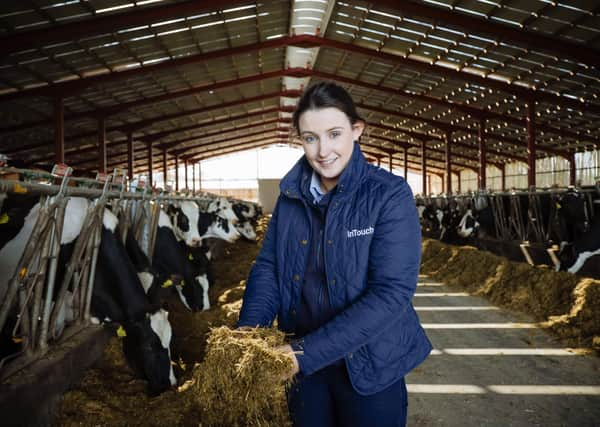Fresh dairy cow management


This can be a stressful time for both the cows and the farmer.
However, with good dry cow management, some of this stress can be avoided.
Advertisement
Advertisement
It is a well-known fact that freshly calved cows cannot eat enough to meet their energy demands, therefore creating a negative energy balance (NEB). Milk yield rises quickly in the weeks after calving and many high-yielding cows cannot eat enough to fulfil their nutrient requirements due to depressed intakes post-calving. This NEB causes body condition loss, which, in turn, then impacts fertility. Immunity is also reduced, and there is a higher risk of metabolic diseases, with 80% of metabolic issues occurring in the transition period.
Body condition score
Cows should be at a body condition score (BCS) of 3–3.25 at calving and lose no more than 0.5 BCS units in the first three weeks post-calving. This timeframe is critical to the animal’s performance. Poor management will reduce milk yields and cause health issues and, therefore, have a detrimental effect on farm profitability.
Management
Dry matter intake is king when it comes to dairy cows, and even more so in this transition period.
Intakes should be measured and encouraged as best as possible. This can be achieved through good diet formulation and ration presentation.
Advertisement
Advertisement
Feed at the feed fence needs to be fresh, palatable and free from any heating or moulds. Water is another key element that can sometimes be overlooked. There needs to be unlimited access to fresh, clean water.
There should be one feed space and cubicle per cow. On many farms across Northern Ireland, cows are still out during the day; however, it is not advisable to let fresh cows out to grass at this time.
Nutrition
Post-calving, the cow’s intake is almost doubled, and usually, more than 50% off the diet comprises of grass silage. Forage analysis results so far this autumn have been very variable.
Cows will struggle for energy when this is the case. A secondary forage can help increase energy levels and promote a higher intake.
Advertisement
Advertisement
Freshly calved cows should always receive the best forages available on-farm. Feeding the correct levels of protein in the diet is essential, as protein drives intake and milk yield. Soya would be first preference and, if possible, using rapeseed meal as a secondary source.
Protein levels need to be carefully managed, as feeding too much protein early on can strip condition off cows due to lower intakes and energy, which will later have an impact on fertility.
Rumen health
A healthy rumen is key. This is important at this stage, as we are trying to increase concentrate levels and can “knock cows back” very quickly if we are not careful.
Straw is an ideal fibre source for keeping the rumen functioning safely, but to say the harvest has been difficult this year is an understatement. Straw for feeding needs to be free from moulds and of good quality. It also needs to be chopped to the correct length (4–6cm), to avoid sorting, so mixing time is important here. Feeding Yea-Sacc®,a live yeast, can help improve rumen function and is available in your concentrates or mineral packs.
Advertisement
Advertisement
We can sometimes overlook mineral supplementation in fresh cows and can undo all the good work done by feeding a good dry cow mineral.
Minerals are vital for many processes in the dairy cow, and deficiencies can cause many issues, leading to a poorer animal performance — something we cannot allow to happen in the current situation.
Minerals should be fed in an organic form and include Bioplex® and Sel-Plex®, which are proven to maintain health and reduce somatic cell count while improving conception rates and udder health.
This is a crucial period in a cow’s lactation.
Getting the basics right and keeping a simple system should all contribute to a long, healthy and profitable lactation for your herd.